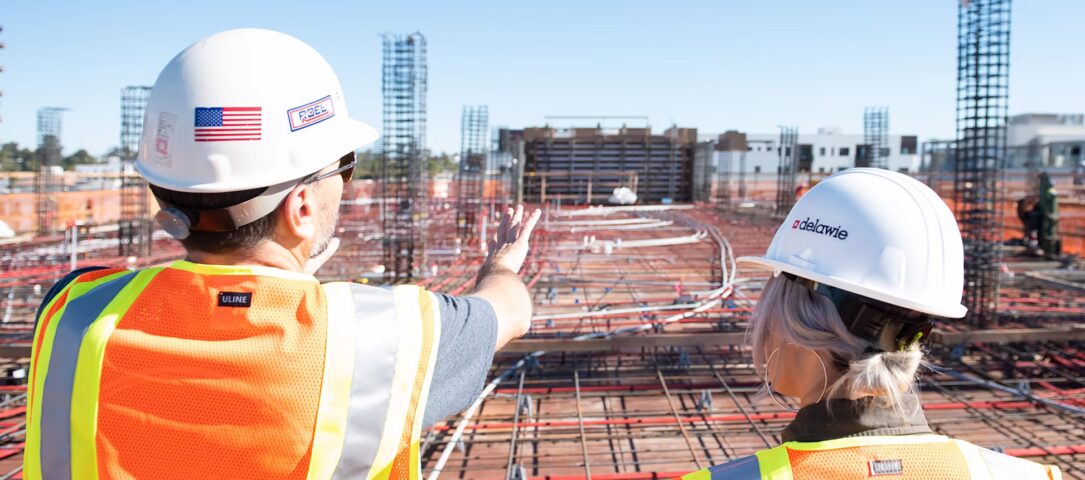
The construction industry is one of the biggest global polluters, consuming vast amounts of resources and generating enormous waste. In the U.S. alone, construction and demolition waste reached 600 million tons by 2018 — more than triple the amount in 1990. As new buildings rise, they add to carbon emissions, which hit record levels in 2023.
While sustainability efforts exist, tight budgets, deadlines, and outdated regulations often hinder progress. However, digital technologies like AI, blockchain, and augmented reality might provide a solution. Researchers from Drexel University’s College of Engineering explored how these innovations could reduce construction waste and improve sustainability. Their study, published in Buildings, highlights both the potential and limitations of these tools.
We spoke with one of the researchers, Dr. Fernanda Cruz Rios, an expert in environmental sustainability in construction, to discuss how digital tech might reshape the industry.
What is a Circular Economy, and Why Does It Matter?
The traditional construction model follows a «take-make-waste» approach—extracting raw materials, using them briefly, and then discarding them. This not only depletes natural resources but also harms the environment and creates social inequalities.
Many raw materials, such as metals and timber, are extracted in developing nations under poor conditions, while wealthier countries enjoy the final products. To make matters worse, developed nations often ship waste back to poorer regions, worsening pollution and health risks.
A circular economy challenges this cycle by prioritizing reuse, repair, and remanufacturing. Instead of discarding materials, we extend their life by integrating them into new projects. This approach also reduces reliance on unstable global supply chains and creates jobs in material recovery and deconstruction.
Why Has Construction Become More Wasteful?
Technological advances have made modern life more convenient, but they’ve also increased waste. In the past, buildings were meant to last for generations, but today’s structures prioritize speed and cost over durability.
Cheap materials like drywall and plastic deteriorate quickly, leading to frequent replacements and increased waste. Meanwhile, reliance on mass-produced, imported materials has disrupted local supply chains and raised transportation emissions.
Modern buildings also depend heavily on artificial heating and cooling rather than passive design strategies like natural ventilation and daylighting. This increases energy consumption and carbon footprints. To build a more sustainable future, the industry must return to adaptable, resource-efficient design while incorporating passive climate control strategies.
How Can Blockchain and Material Passports Encourage Sustainability?
Blockchain and material passports offer promising solutions by improving transparency and traceability in construction.
A material passport is a digital record containing key information about a material’s properties, lifespan, and potential for reuse.
Think of it as a «nutrition label» for building materials—except instead of listing calories, it tracks recyclability, durability, and origin.
When combined with blockchain, these digital records ensure data integrity and create a marketplace for reclaimed materials. By making it easier to track and trade used materials, these tools help transition construction to a circular economy.
How Can AI Make Buildings More Sustainable?
AI is already transforming industries, and construction is no exception. By analyzing vast amounts of data, AI can optimize material choices, energy use, and building layouts to minimize waste.
Machine learning algorithms can predict material longevity and recyclability, ensuring smarter design decisions. AI can also help identify salvageable materials in existing buildings, making deconstruction more efficient.
At Drexel’s CIRCLE lab, researchers are using AI to map materials in urban infrastructure. This data helps recover and reuse components when buildings are renovated or demolished.
Additionally, AI-driven robotics can assist in sorting demolition waste, improving recycling efficiency. By integrating AI with digital tools like BIM (Building Information Modeling) and material passports, sustainable design becomes more scalable and practical.
What Methods Can We Use Today to Reuse Building Materials?
One of the most effective ways to reduce waste is deconstruction instead of demolition. This method allows valuable materials like wood, brick, and steel to be recovered rather than discarded.
Several U.S. cities have already adopted deconstruction policies. Portland, Milwaukee, San Antonio, and Palo Alto require deconstruction for certain buildings. Pittsburgh has also implemented a material recovery initiative to reduce landfill waste and promote sustainability.
In Philadelphia, organizations like Circular Philadelphia are advocating for local policies that support deconstruction and material reuse.
These initiatives demonstrate that sustainable construction isn’t just theoretical—it's happening right now.
What’s Preventing Widespread Adoption of Sustainable Practices?
The main barriers to sustainable construction aren’t technological but regulatory and behavioral. Many building codes don’t support material reuse, making demolition cheaper than recovery. Additionally, landfill fees are often too low to incentivize recycling.
Education gaps also play a role. Many architects, engineers, and contractors lack training in circular economy principles, making them hesitant to adopt new approaches.
Behavioral factors are another obstacle. Some architects resist designing for disassembly, associating it with temporary or low-quality construction. Many also prefer to see their buildings as permanent, rather than adaptable structures meant for eventual reuse.
Misconceptions about salvaged materials also slow progress. Some view them as lower quality, despite evidence showing that many reclaimed materials are just as durable as new ones. Overcoming these challenges requires stronger policies, financial incentives, and better education on sustainable construction.
The Future of Sustainable Construction
Digital technologies are not a silver bullet, but they offer powerful tools for reducing construction waste. AI, blockchain, and material passports improve efficiency, transparency, and resource recovery, helping shift the industry toward sustainability.
By embracing circular economy principles, supporting deconstruction, and leveraging digital innovations, we can build a future where waste is minimized, resources are preserved, and construction becomes a force for environmental and economic resilience.

